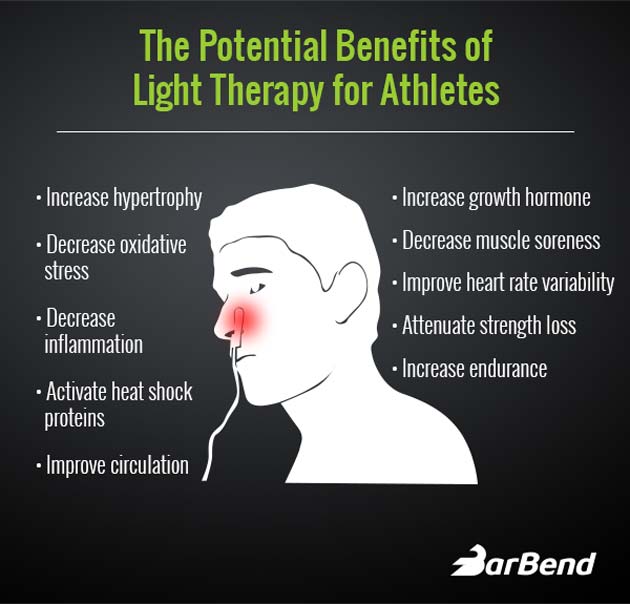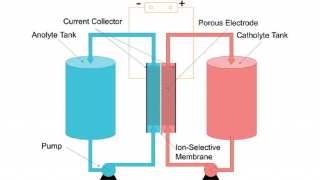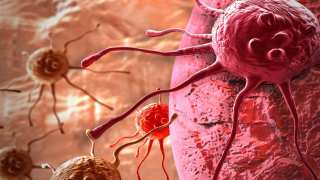Could it be true that infrared LED light is potentially beneficial to the muscles of the human body? Sounds like a farfetched theory but the evidence backing this claim certainly appears to proves otherwise. Even the National Aeronautics and Space Administration (NASA) have conducted research demonstrating the energy generated within cells, and therefore endowing a power of regeneration to repair broken tissues, when subject to red light.
Photobiomodulation or low level laser therapy (LLLT), a type of treatment that stimulates activity in the body on exposure to photons of low-level light, has shown to be an important phenomenon in clinical therapy positively impacting the soft tissues of muscles and helping in their recovery. Injured sportspersons, bodybuilders and athletes who rely on their back, arms or legs to perform could profit from this. According to Dr. Lew Lim, Founder and CEO of Vielight Inc, the red light of about 600 - 1200 nm will be ideal if administered for about 20 - 25 minutes via a small clip on the nose as the region is delicate and easily penetrable.
What Makes Red Light So Therapeutic
LED red light is non-coherent, meaning it has short wavelengths and different waveforms with sudden phase changes in the beam, as compared to coherent sources like sound. It is these properties that allow the photons to spread out over a larger surface and penetrate deeper into the skin, thus enabling doctors to treat the entire area-in-need effectively.

Potential benefits. (BarBend)
Light therapy works synonymously with the powerhouse of cells, mitochondria. Red or near-infrared (NIR) light helps these organelles release chemical energy in the form of adenosine triphosphate or ATP and CO2, as part of respiration. So, what essentially occurs when the light falls on your body is, as Dr. Lim, describes: “It helps to activate what you call the gene that leads to muscle recovery and tissue repair. Exercise creates mini tears in the muscle and your body rebuilds the tissues and that’s where you gain strength. When you deliver red light to these areas, you’re helping your muscles rebuild in a quicker way.” There are certain stem cells in the muscles that focus specifically on its development and repair called satellite cells, which in response to red light and natural movements from exercise get activated. Hence, the injured or tired proteinaceous tissues are likely to get healed or soothed more quickly.
Another application is the release of nitric oxide that helps in blood circulation and cardiovascular strength. Now, when a muscle is stressed, an inflamed site forms, which can be decreased and repaired using light therapy as the CO2 level inhibits cytokine production, which is responsible for inflammation. For males, it is also known to improve testosterone and growth hormone levels. Similarly, for women, it is believed to regulate and normalize thyroid levels. Before a big day on the field, adequate sleep and muscle recovery is essential, and exposure to this kind of light does just that.
Case Studies: People Reactions
In 2007, four bodybuilders were subject to lasers fed under their skin for about 20 minutes in each session, over a period of three weeks. After this period, it was noticed that deadlifts, bench presses and squats endurance was enhanced and weights were increased by 10kg.
A 2016 study of identical twins showed that the individual undergoing light therapy treatment for a period of 12 weeks demonstrated 80% better leg presses and reduced muscle weakness compared to the sibling, who had a placebo treatment.
A similar experiment involving 46 persons exposed to a mix of laser probes, diodes and clusters and flexible LED arrays concluded that such treatment could result in “decreased inflammation and increased muscle mass”.
All health benefits considered, before starting any form of red light or infrared therapy, individuals must consult a physician and learn its complete effects on the human body.
Top image: Anxious Athlete Waiting at Starting Line (Public Domain)
References:
English, N. (2017), Bar Bend, https://barbend.com/light-therapy-strength/, (accessed 13 Aug 2017)
Orrill, J. (2015), Livestrong.com, http://www.livestrong.com/article/76072-led-light-therapy-skin-care/, (accessed 14 Aug 2017)
Red.Light.Man (2016), https://redlightman.com/blog/muscle-function-recovery-doubled-with-light-therapy/, (accessed 14 Aug 2017)
PanMedica, http://www.panmedicahealth.com/photobiomodulation.shtml, (accessed 15 Aug 2017)







No comment